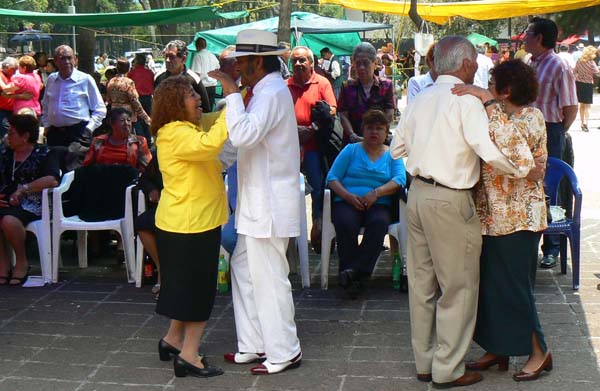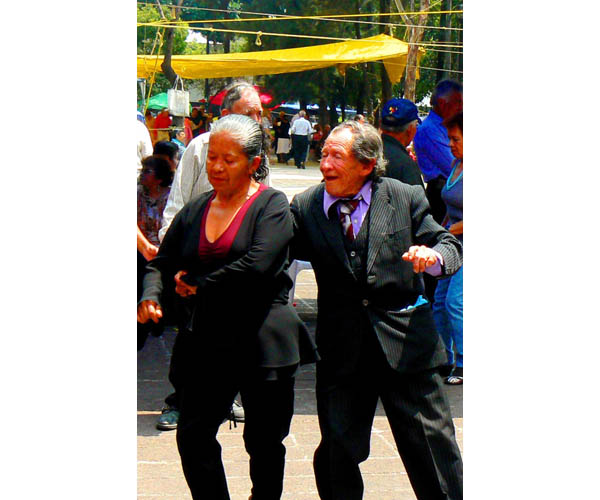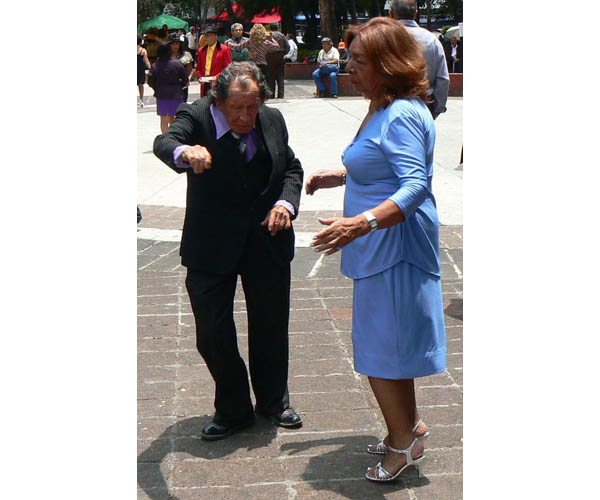This summer the afro-cuban rhythms of danzón, a danceform that came to life in the pulsing Havana social clubs of the 50s, is hitting the streets of London. As part of Parasol Public (an initiative of Parasol Unit Foundation for Contemporary Art), Argentinean artist Ana Gallardo has developed a participatory dance event entitled A place to live when we are old, which will take root in the heart of Spitalfields.

From what were once considered scandalous origins, danzón was taken from clubs to communal outdoor spaces to become a popular pastime across Latin America. The rich tradition is widely recognized for bringing people of all ages, classes and creeds together, particularly the older generation who first embraced it all those years ago.
Founding director of Parasol Unit and curator of Parasol Public, Ziba Ardalan first saw A place to live when we are old two years ago at the São Paulo Bienal. She immediately identified with the work and decided to bring it to London. Ziba took some time to talk to aqnb about why this event is the perfect antidote to grey skies and growing old.
aqnb: What motivated you to branch out of the gallery space?
Ziba Ardalan: Well, we launched Parasol Public last year and we worked with an American artist called Kate Gillmore. So this is our second edition of Parasol Public, which is a week of public art projects that we will hopefully be doing every summer. And we just go out of our comfort zone and into the public to bring art to the people.
aqnb: How did the idea for this project came about?
ZA: Ana Gallardo is from Argentina, as you know, and she spent some time in Mexico where she became aware of this kind of dance, which is called danzón. The people who really started it were very elderly and Ana couldn’t get in touch with them until her last day in Mexico… meanwhile she found three other dancers who were quite old, all of them in their 70s, but were able to travel to São Paulo and do the project there. They will do the same for London and I think some of them have never traveled abroad like this, so it will be exciting for them and it will be exciting for us.

aqnb: So these are elderly dancers, flying all the way from Mexico to teach us some moves?
ZA: That’s the whole beauty of the project! Danzón is usually done by older people in Mexico, in public squares. I think it’s wonderful, that when people get older and have more time, that they really use it in a positive way, instead of becoming depressed sitting in their own environment, thinking everything around the world is wrong. We can have a positive take on that and get dressed every morning, put some makeup on, do our hair and go to the public square and dance for a couple of hours… and when we come back we are in a much better mood!
aqnb: There’s something quite exciting about transferring a social activity that is so normalised in Latin America into a place like Spitalfields, which functions in a different way and elicits a different type of social behaviour…
ZA: Yes it is. I would say that English people are very happy people, but when you are living in a big city like London (and they are not all English people, there are people of all different nationalities, of course) the weather is not always that great every now and then, especially as we get older and do not fall at the centre of attraction and no longer have an occupation… you know, it’s great to see that there are other ways to be happy. When I saw this project at the São Paulo Bienal, I thought that’s such a great idea to bring to London, for people to hopefully learn something new and be happier.
aqnb: How do you think the public here will take to it?
ZA: I think they will engage quite well, we are very hopeful.

aqnb: What drew you to that Bishops Square as a site?
ZA: As you know the gallery is in East London, so we are trying to take Parasol Public not too far from Parasol Unit. Last year we did the public project in Exchange Square, right near Liverpool Station. This year we really thought that, to do dance, we need to be near not only offices but also to have a passage of people. Exchange Square is mainly office buildings so you get very few other passers by. Where-as Bishops Square is much more open to every kind of audience. So for the dance project it’s just perfect.
aqnb: There are unique considerations working outside the gallery space, what were some of the things you had to negotiate with this one?
ZA: This was mainly a question of space. We had a discussion with the people who run Bishops Square. They were extremely kind and friendly, and have actually sponsored this site for us, which is very generous but they want something to go on there. We were extremely lucky, everything has been very straightforward, Ana Gallardo is a wonderful artist, full of enthusiasm, we’ve worked together to fine tune the kind of structure we wanted to have. Safety issues are always important; insurance for the public but particularly for the very elderly people coming from Mexico, so these are the issues we’ve been taking care of but everything has gone very, very well.
aqnb: Most people would perhaps consider dance in a public space performative but there seems to be an important difference here; this is an agency for social action…
ZA: It is a performance but also a social activity at the same time. The dancers will start by dancing with themselves, and they hope that people will join in. They are going to teach people danzón! I really hope that some kind of new community will start to continue this tradition… So turn it into a cultural activity. I can imagine that we are a little bit more reserved in Europe; to dance in public and to dance with people we don’t know. But in a way, you know, it’s not a bad idea to open up. Dance for a couple of hours and open up to the world!













